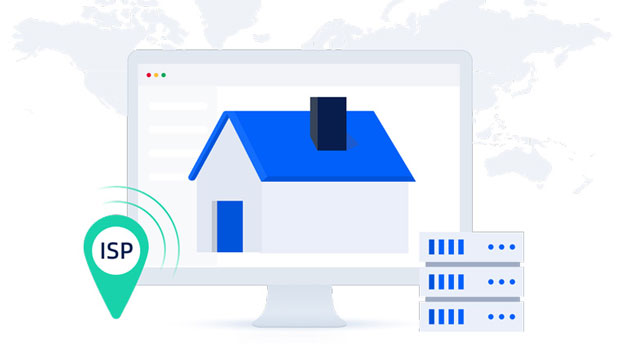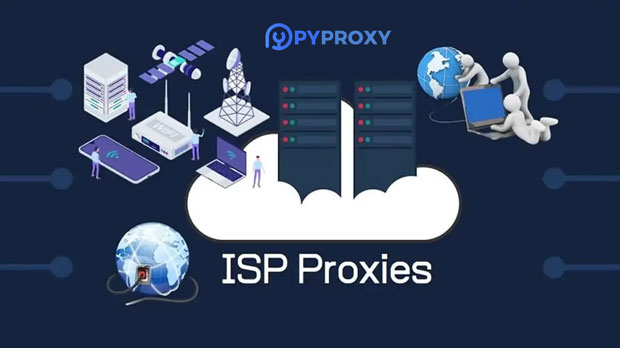How to Improve Search Engine Optimization SEO Using IP Residential Proxy?
In today's digital landscape, Search Engine Optimization (SEO) is essential for any business looking to improve its visibility and rankings on search engines. One of the lesser-known tools that can significantly boost SEO efforts is the use of residential ip proxies. These proxies can help manage various SEO tasks more efficiently and effectively, such as conducting market research, managing multiple social media accounts, scraping data, and preventing IP bans. By using residential IPs, businesses can simulate real user traffic, gain better insights, and avoid penalties that could harm their rankings. In this article, we will explore how residential IP proxies can be strategically used to enhance SEO outcomes. The Role of Residential IP Proxies in SEOResidential IP proxies serve as intermediaries between a user and the internet. Unlike data center proxies, which are often recognized and blocked by search engines due to their origin from non-residential servers, residential proxies are linked to actual physical addresses. This makes them appear like real users accessing the web, helping businesses avoid detection and penalties from search engines for violating terms of service.Residential proxies help SEO professionals by enabling them to carry out specific tasks without the risk of being flagged or restricted by search engines. These tasks include data scraping, competitive analysis, account management, and more. The ability to conduct these activities anonymously and without restrictions gives businesses a significant edge in gathering valuable insights and making informed SEO decisions.Improved Data Collection and Market ResearchOne of the primary advantages of using residential IP proxies in SEO is the ability to conduct detailed data collection and market research without restrictions. SEO professionals often need to scrape data from various sources, such as search engines, social media platforms, and competitor websites, to gather valuable insights. However, repeated requests from the same IP address can trigger rate limits, captchas, or even block listings. Residential IP proxies help bypass these restrictions by rotating IP addresses, making it appear as though requests are coming from different users.This enables SEO professionals to access a larger pool of data and gain real-time insights into competitor strategies, trending keywords, and audience behavior. By obtaining accurate data, businesses can adjust their SEO campaigns and improve targeting, content optimization, and keyword strategies.Enhanced Web Scraping CapabilitiesWeb scraping is a crucial task in SEO, as it involves extracting valuable information from websites for analysis. Without the right tools, scraping can become difficult due to anti-scraping measures implemented by search engines and websites, such as IP blocking, CAPTCHAs, or rate-limiting mechanisms.Residential IP proxies can solve this issue by providing a range of real IP addresses. These IPs are less likely to be flagged by websites as they appear as regular users, thus helping to bypass these restrictions. With the ability to scrape large volumes of data without interruption, SEO professionals can gain access to key metrics, such as competitors’ content strategies, link-building techniques, and even search engine result pages (SERP) data. This information helps refine SEO efforts, making them more effective and aligned with the target audience's needs.Bypassing Geo-restrictions for Global SEOFor businesses targeting global markets, the use of residential IP proxies can help bypass geographical restrictions and gain access to region-specific search results. Search engines often tailor search results based on a user’s location, which can affect how a website ranks in different regions. This presents a challenge for businesses that want to monitor their rankings or conduct SEO research in multiple countries.With residential IP proxies, businesses can mask their actual location and simulate browsing from different regions, allowing them to check localized search results, monitor regional trends, and adjust their SEO campaigns accordingly. This strategy is particularly beneficial for international SEO, as it helps ensure that websites rank well across different countries and search engines.Managing Multiple Social Media Accounts and EngagementSocial media platforms are increasingly important for SEO. They provide valuable backlinks, increase website traffic, and offer opportunities for audience engagement. However, managing multiple social media accounts can be challenging, as platforms like Facebook, Instagram, and Twitter often restrict accounts that engage in repetitive or automated activities from the same IP address.Residential IP proxies help overcome this limitation by allowing businesses to manage multiple accounts without triggering restrictions. These proxies rotate IP addresses to simulate activity from different users, ensuring smooth engagement across various platforms. This capability is particularly useful for managing multiple social media accounts, running paid ads, or promoting content without risking account suspension.Preventing IP Bans and PenaltiesOne of the significant challenges businesses face when conducting SEO activities, such as data scraping or automated searches, is the risk of IP bans or penalties. Search engines and websites are equipped with sophisticated algorithms designed to detect unusual patterns of activity, such as excessive scraping or repeated queries from the same IP address. Once flagged, these IP addresses are blocked or penalized, hindering SEO efforts.Residential IP proxies reduce this risk by rotating through multiple real IP addresses, making it difficult for search engines to detect automated or suspicious behavior. By simulating human-like browsing patterns, businesses can avoid penalties and maintain access to the data and services they need for SEO optimization. This ensures a smooth, uninterrupted workflow and better long-term results.Improving SERP Tracking and Rank MonitoringSearch Engine Result Pages (SERPs) are a crucial element of SEO. Tracking keyword rankings and monitoring how a website performs in the search engine results is key to measuring the effectiveness of SEO strategies. However, conducting accurate SERP tracking can be challenging due to geo-location-based rankings and the risk of search engines showing personalized results based on user history and behavior.By using residential IP proxies, SEO professionals can simulate searches from different locations and receive unbiased, consistent SERP data. This helps eliminate fluctuations in rankings caused by personalized search results and ensures that businesses can accurately track their SEO progress. With reliable data on search engine rankings, businesses can fine-tune their strategies and improve overall SEO performance.Conclusion: Maximizing SEO Potential with Residential IP ProxiesIncorporating residential IP proxies into an SEO strategy can significantly enhance the effectiveness of various tasks, from market research to SERP tracking. By using real user IP addresses, businesses can bypass restrictions, gather more accurate data, manage multiple accounts, and avoid penalties that could negatively impact SEO performance. The ability to conduct research anonymously and without limitations provides businesses with valuable insights into their competitors and target audience, ultimately helping to improve content strategies and keyword targeting. As SEO continues to evolve, residential IP proxies will remain an essential tool for businesses looking to stay ahead in the competitive digital landscape.
2025-02-01

























































